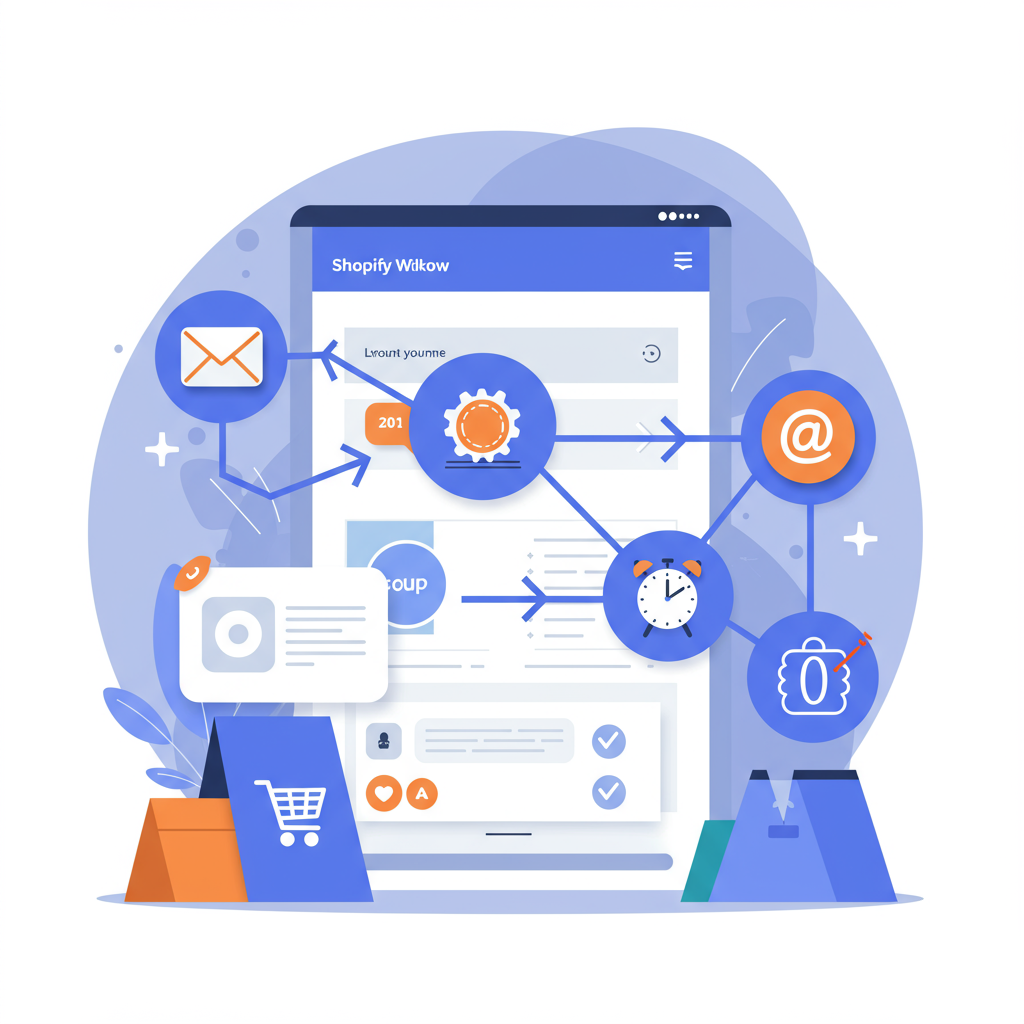Discover how to leverage Shopify Flow to create a seamless, personalized, and automated onboarding experience for your new customers, boosting retention and lifetime value.
Hello fellow Shopify merchants! Today, I want to talk about something incredibly vital for your store’s long-term success: customer onboarding.
It’s not just about making a sale; it’s about building a lasting relationship from the very first interaction.
A well-executed onboarding process can significantly improve customer retention, boost lifetime value, and turn first-time buyers into loyal advocates.
But how do you ensure a consistent, personalized, and efficient onboarding experience without drowning in manual tasks?
My answer, and the focus of this article, is Shopify Flow.
Shopify Flow is a powerful automation tool built right into your Shopify admin. It allows you to automate tasks and processes across your store and integrated apps.
Think of it as your personal assistant, tirelessly working behind the scenes to streamline operations and enhance customer interactions.
When it comes to customer onboarding, Flow is an absolute game-changer. It enables you to create sophisticated, multi-step workflows that trigger automatically based on specific customer actions.
Let’s dive into how you can leverage Shopify Flow to build an exceptional customer onboarding workflow.
Our primary goal is to welcome new customers, educate them about your brand, and guide them towards their next purchase or engagement.
The first step in any Flow workflow is choosing a trigger. For onboarding, common triggers include “Customer created” or “Order created.”
I often start with “Customer created” if I want to welcome them even before their first purchase, perhaps after they sign up for an account or newsletter.
However, “Order created” is excellent for post-purchase onboarding, ensuring they’ve already committed to your brand.
Once triggered, the first action should almost always be a personalized welcome. Using an app like Klaviyo or Mailchimp integrated with Flow, you can send a beautiful welcome email.
This email isn’t just a receipt; it’s an introduction. Share your brand story, highlight key benefits, or offer a small discount on their next purchase.
Next, I recommend adding a “Tag customer” action. This allows you to segment your new customers. You might tag them as “New Customer” or “Onboarded.”
This tagging is crucial for future marketing efforts, ensuring you don’t send them “new customer” offers again once they’re established.
After a short delay – perhaps 24 or 48 hours – you can trigger a follow-up. This could be an email with a “getting started” guide for your products.
Or, if your products require some explanation, a link to a video tutorial or a FAQ section can be incredibly helpful.
For certain high-value customers or specific product categories, you might want an internal notification. Flow can send a Slack message or email to your team.
This alerts your customer service or sales team to personally reach out, offering a white-glove experience for your most important new clients.
Another powerful step is to automatically enroll them in your loyalty program. If you use an app like LoyaltyLion or Smile.io, Flow can often integrate directly.
This immediately shows them the value of staying with your brand and earning rewards.
After a week or two, consider sending a feedback request. A simple email asking “How was your first experience?” can provide invaluable insights.
You can link to a short survey or simply ask them to reply to the email. This shows you care about their experience.
Flow can also be used to enhance personalized product recommendations. Based on their first purchase, you can trigger an email showcasing complementary items.
This proactive approach not only increases average order value but also makes the customer feel understood and valued.
Setting up these workflows in Shopify Flow is intuitive. You’ll find Flow under the “Apps” section in your Shopify admin.
Click “Create workflow,” choose your trigger, and then add conditions and actions using the visual builder.
Always test your workflows thoroughly before setting them live. You can use test orders or customer accounts to ensure everything fires as expected.
The benefits of automating your customer onboarding with Flow are immense. You’ll save countless hours of manual work.
Your customers will receive a consistent, professional, and personalized experience every single time.
This leads to higher customer satisfaction, increased repeat purchases, and ultimately, a stronger, more profitable business.
Beyond the basics, consider integrating Flow with other apps like review platforms (e.g., Loox, Yotpo) to prompt review requests at the right time.
Or, use it to segment customers based on their first purchase value and tailor subsequent communications accordingly.
Remember, onboarding isn’t a one-time event; it’s an ongoing process of nurturing your customer relationships.
Shopify Flow empowers you to build a robust, scalable system that grows with your business.
I’ve found it to be an indispensable tool for enhancing customer loyalty and operational efficiency.
What are your thoughts on automating customer onboarding? Have you used Shopify Flow for this, or do you have other strategies you find effective? I’d love to hear your perspective!
Start experimenting with Shopify Flow today, and watch your customer relationships flourish.






